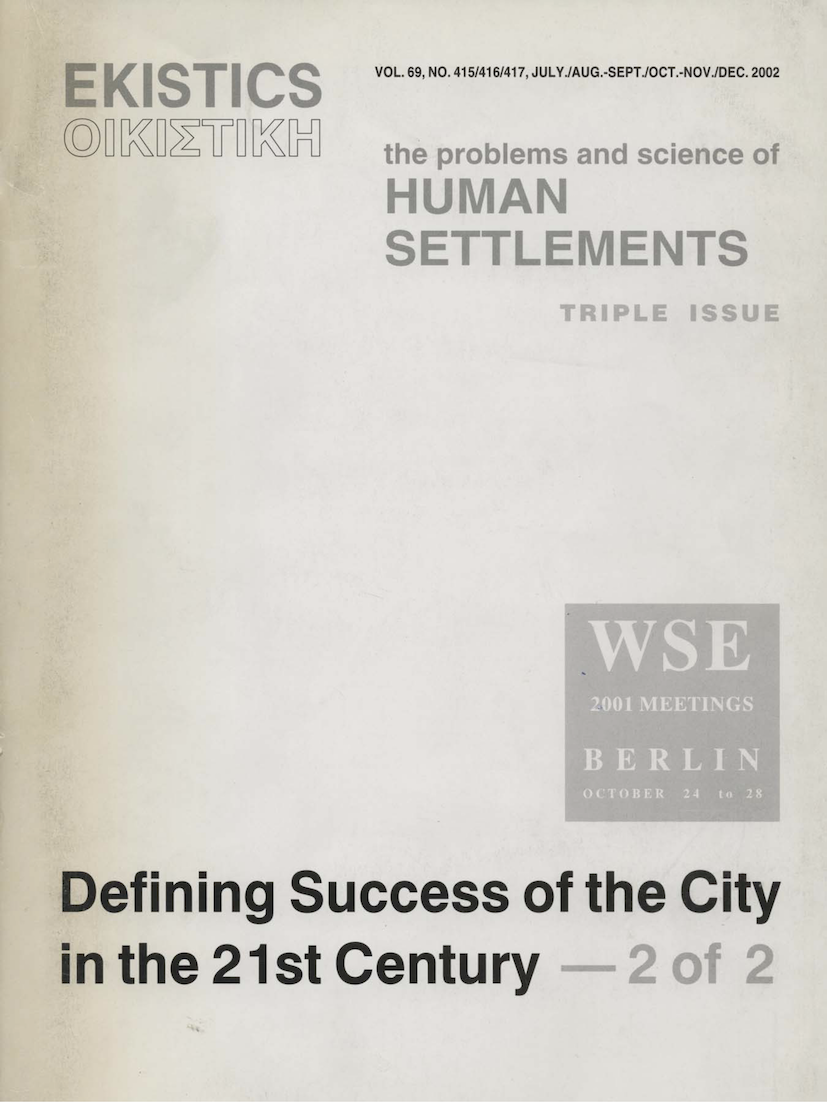Doxiadis and the ideal dynapolis: The limitations of planned axial urban growth
DOI:
https://doi.org/10.53910/26531313-E200269415-417357Keywords:
Doxiadis, Dynapolis, Urban GrowthAbstract
The author is a Professor in the Department of Geography and Planning at the University at Albany, State University of New York, where he directs the Masters Program in Urban and Regional Planning. He is a member of the World Society for Ekistics (WSE), the American Institute of Certified Planners, the American Planning Association, the International Planning History Society, and many other professional and scholarly associations, and he has served as a consultant with the United Nations, UNICEF, USAID, and various projects funded by the World Bank and AID. His research and publications focus on: the history of ideas in planning and community development; metropolitan and regional development policies; the revitalization of old neighborhoods; disaster avoidance and relief; and, micro-enterprise development. The text that follows is a revised and extended version of a paper presented at the WSE Symposion "Defining Success of the City in the 21st Century," Berlin, 24-28 October, 2001.
Downloads
Published
How to Cite
Issue
Section
License
Please contact the Editor-in-Chief: editor@ekisticsjournal.org, should you have any questions on copyright for your submission.
This research journal is for Educational and Knowledge development purposes.
All material published on this site complies with our copyright and terms as described by the Attribution-NonCommercial-NoDerivaties 4.0 International (CC BY-NC-ND 4.0)






